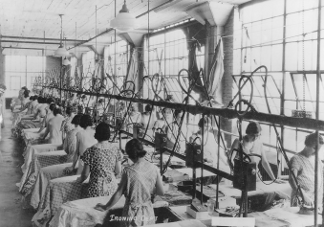STINCHCOMB, WILLIAM ALBERT (5 June 1878-17 Jan. 1959), father of the CLEVELAND METROPARKS, was born in Cleveland, to William and Julia Stinchcomb. He was educated in CLEVELAND PUBLIC SCHOOLS, and in 1895 began as a surveyor for the city engineer. Appointed chief engineer of the City Parks Dept. in 1902, he laid out detailed plans for developing the park system. Stinchcomb became county engineer in 1912 for 3 terms, responsible for the DETROIT-SUPERIOR BRIDGE construction and Lorain-Carnegie Bridge planning, drafting the first comprehensive plan for lakefront public development, and convincing the Ohio legislature to block a city deal turning over $30 million worth of shoreland to railroads. In 1913, Stinchcomb got the Ohio legislature to revise the state constitution to permit legislation authorizing natural resource conservation. When the Ohio Supreme Court ruled Cuyahoga County's park law unconstitutional in 1913, Stinchcomb drafted and lobbied through new legislation establishing the Metropolitan Park System, of which he was appointed first engineer. Stinchcomb mapped out a great circle, "emerald necklace," around Cleveland, and used proceeds from a levy to buy land. During the Depression, he employed Civilian Conservation Corps and Public Works Admin. grants to put thousands to work making roads; building shelterhouses, parking lots, bridges, nature trails, ball fields, playgrounds, and museums; and reforesting thousands of acres. Stinchcomb retired in 1957; a park on Rocky River's east bank, designed by Ernst Payer and including a 30-ft.-high carillon tower designed by Wm. McVey, honors him. Stinchcomb married Annie M. Long in Aug. 1905 and had 2 children, Thomas and Betty. He was buried at West Park Cemetery.
Last Modified: 22 Jul 1997 04:42:31 PM- Related Article(s)









